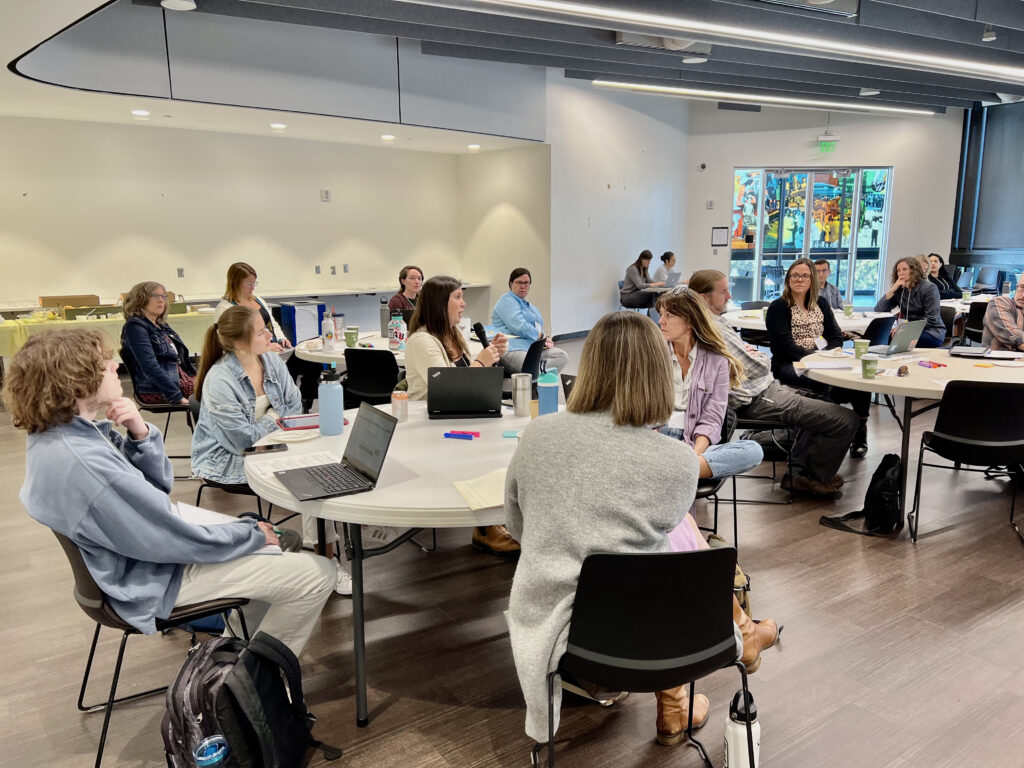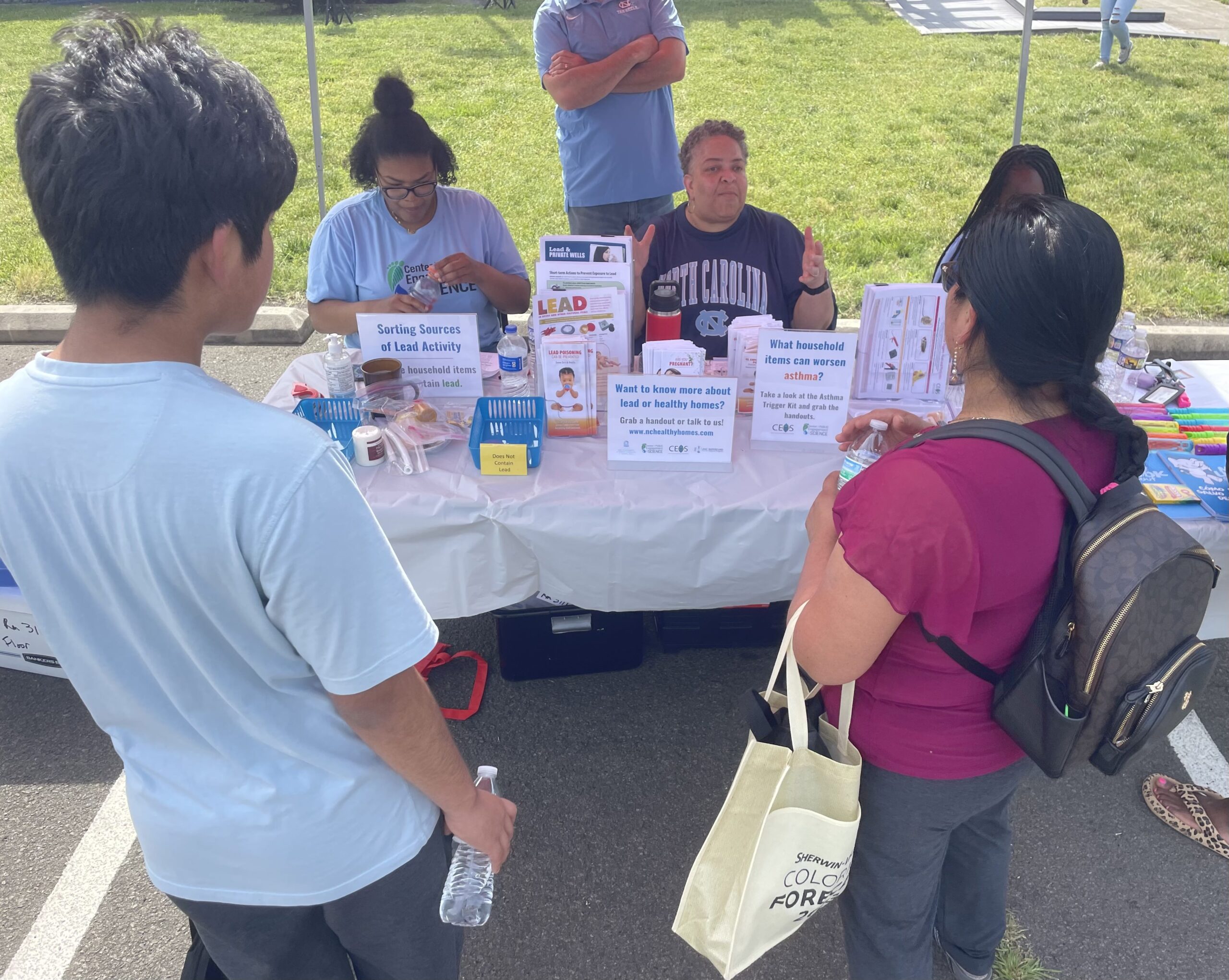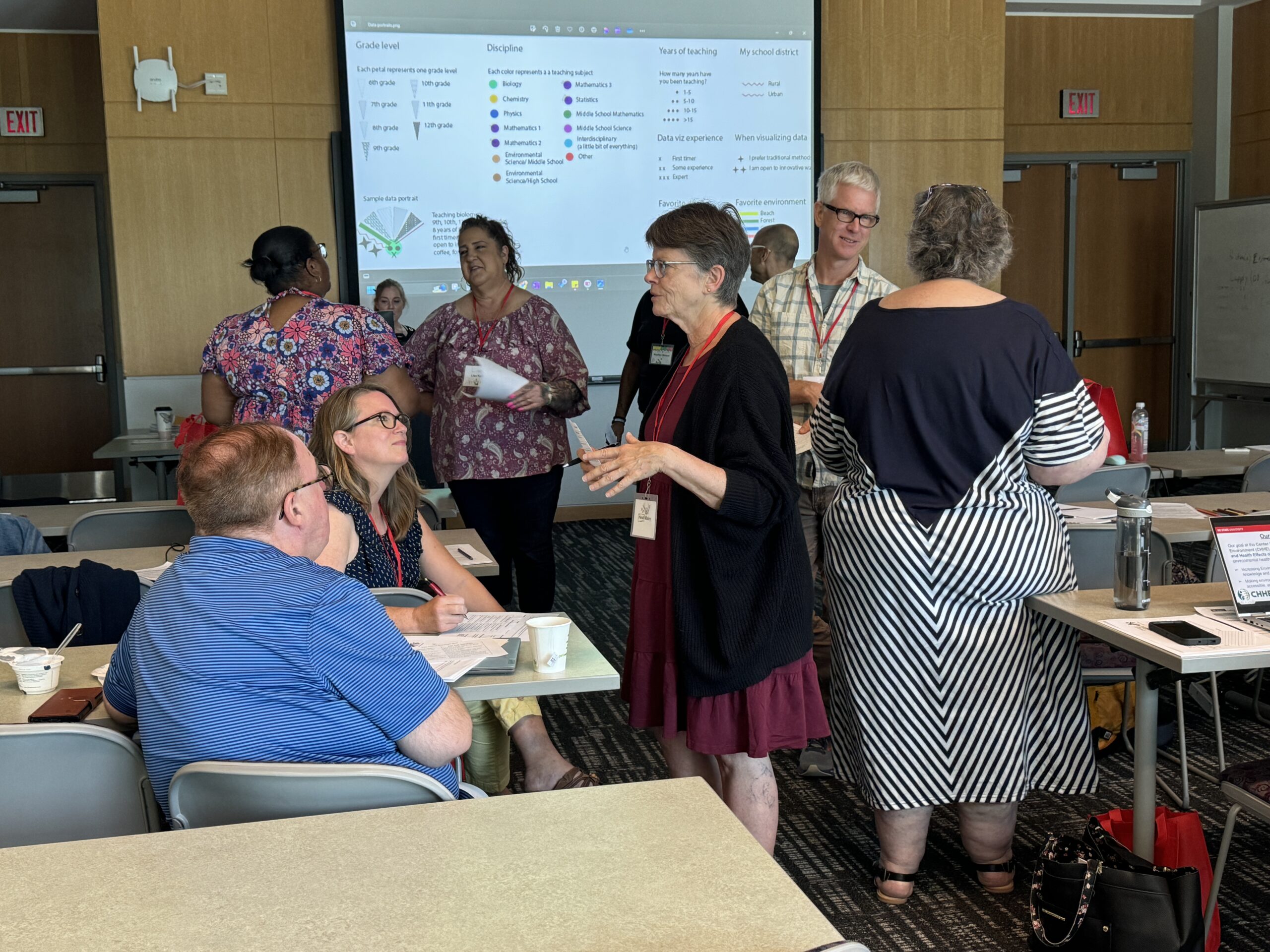Community Engagement in Action
Projects that support our partners and impacted communities to address environmental health issues.
Fish Consumption Advisories
Many freshwater fish in North Carolina are safe to eat, but due to high levels of pollutants in some waterbodies, some fish are not. Contamination often comes from industrial chemicals released into the air that eventually make their way back to lakes and rivers through rain, snow, and settling dust particles. Sometimes pollutants (like PFAS) have been discharged directly into our waterways through permitted or non-permitted releases. Often times (but not always!), there are rules of thumb that help people make decisions about consuming fish with lower levels of contamination. In efforts to make it clearer and easier for people to understand which fish are better for them and their families to eat, we have been working collaboratively with community engagement professionals at Duke and UNC to engage stakeholders around this issue.
Communicating Advisory Information
The CEC works to engage state and local health departments, produces resources for educators and public health professionals, and disseminates best practices. The 2019 and 2023 NC Fish Forums where we explored innovative approaches to increase understanding of the FCA process, foster greater collaboration among stakeholders, and identify opportunities to improve existing processes. To learn more about the Forum, read the white paper, and learn more about our ongoing work, click here. In partnership with the Duke University Superfund Center, we’ve been working on a one-stop-shop for communicating fish consumption advisories to vulnerable communities. This manual walks you through best practices when it comes to messaging, language, channels of communication, and dealing with pitfalls. To learn more about our work with the Duke team, this story highlights the translational science behind fish consumption advisories.
PFAS Chemicals

The Cape Fear River basin is the largest watershed in North Carolina. In 2016, Center researchers published data showing elevated levels of PFAS chemicals in the Cape Fear River that were not being removed by municipal drinking water treatment systems. Since then, the CEC and Center researchers have been working with communities along the Cape Fear River who are impacted by PFAS. These relationships were a driving force for the creation of the Center for Environmental and Health Effects of PFAS, a Superfund Research Center at NC State with many CHHE members leading research projects and cores.
Supporting Impacted Communities
In many cases, impacted community members appreciate being able to voice their questions and concerns directly to researchers, and the CEC helps provide and facilitate spaces for this type of dialogue through community meetings, webinars, and Center events that engage groups working on PFAS (right). Effectively communicating Center research on an emerging challenge like PFAS helps residents understand their exposures and make informed decisions in their lives. As an example, the CEC helps Center members do this is by collaborating with researchers and community members to develop materials that translate and disseminate the research in a way that is responsive to people’s actual concerns about PFAS. See examples of some of these resources here. Another way we do this is by helping members report PFAS research results back to participants and their communities in ways that are clear, respectful, and actionable. As an example, the CEC has worked closely with members of the GenX Exposure Study team as they develop letters to individual participants, public presentations, and community meetings.
Toxic Metals
Although metals can occur naturally in the environment, some communities face increased exposure to metals, often from current or historical industrial sources, which can be toxic and cause negative health effects, especially in children. The CEC works closely with Center researchers who study the environmental and human health implications of exposure to metals, as well as the residents and communities directly impacted by known or suspected sources of toxic metals.
Durham, NC
In 2015, CHHE research showed elevated levels of both lead and cadmium in blood samples from residents of Durham, NC. Since then, the CEC has been in ongoing collaboration with PEACH, a community-based organization that addresses lead poisoning prevention in Durham, including the specific neighborhoods identified as having elevated levels in the above study. Over the years, we have worked with PEACH to host community-based events and lead remediation workshops, produce educational materials, support, and engage local lawmakers and health departments on lead poisoning prevention. Most recently, the CEC and CHHE helped Durham residents understand and respond to reports of elevated levels of lead in the city’s parks. In June 2024, PEACH partnered with the CEC to host a community health fair and SoilSHOP that allowed Durham residents concerned about exposure to have soil from their homes analyzed for lead and arsenic by NC DHHS and ATSDR.

Engaging new partners
Durham is not the only community concerned about the presence of lead and other metals in their environment. Since 2023, the CEC and Center researchers have been collaborating with FreedomOrg, a community-based organization working in Princeville, NC. Princeville was the first town independently governed and chartered by Black resident in the United States, and as such, groups like FreedomOrg are committed to the community’s historical preservation, economic development, and environmental health. FreedomOrg partnered with CHHE to measure metals in more than 30 soil samples ahead of a large community garden initiative. The group wanted to understand which parcels of land were safe for growing food, and used the analytical results to inform the siting and development of their agricultural areas. Moving forward, we will build on this work to inform their work as they expand their agricultural, flood mitigation, and housing programs.
Obviously, field visits and analyses take time. To date, this work has relied on multiple field visits for sample collection but university laboratories for analysis, meaning there is an inherent lag time between a community identified concerned, sample collection, sample analysis, and results communication and decision making. Now, CHHE has a portable XRF, which gives CHHE the capacity to conduct reliable field-based analyses for metals, allows the CEC to respond more rapidly to community concerns about metals in the environment, and acknowledges the opportunity that soil science presents for contributing to environmental health science more broadly.
“Only through interdisciplinary partnerships, enhanced by improved communication and education, can meaningful reduction in human exposure to soil borne toxic chemicals and human disease burdens be achieved” (Duckworth et al., 2022).
Working with Educators
The CEC works closely with formal and informal educators who are interested in translating or applying EHS in their work. To date, we’ve focused on a train-the-trainer approach to our work with K12 teachers, conducting workshops and ongoing programming that builds teachers’ capacity in EHS concepts, research practices, and data analysis. We partner closely with K12 experts on campus, like The Data Science Academy and The Science House, to ensure that we best translate and adapt Center research to align with state curriculum requirements so that teachers, students, and their communities can take interdisciplinary approaches to understanding and addressing EHS issues.
Most recently, the CEC developed a year-long workshop for middle and high school teachers in partnership with Taryn Shelton, the Science House, and Data Science Academy. Using CHHE research themes and datasets, teachers are introduced to data analysis and management strategies, resources, and future collaborators. The cohort spent summer 2024 building their data science skills, working with Center researchers, and creating interdisciplinary lessons together. They will spend the 2024-25 school year working closely with each other and the CEC as they pilot test their lessons and activities. Stay tuned for updates and outcomes!
PFAS SRP and CHHE work together to get answers on PCBs in building materials and reported health effects from invited guests at the Iowa Superfund Research Program




